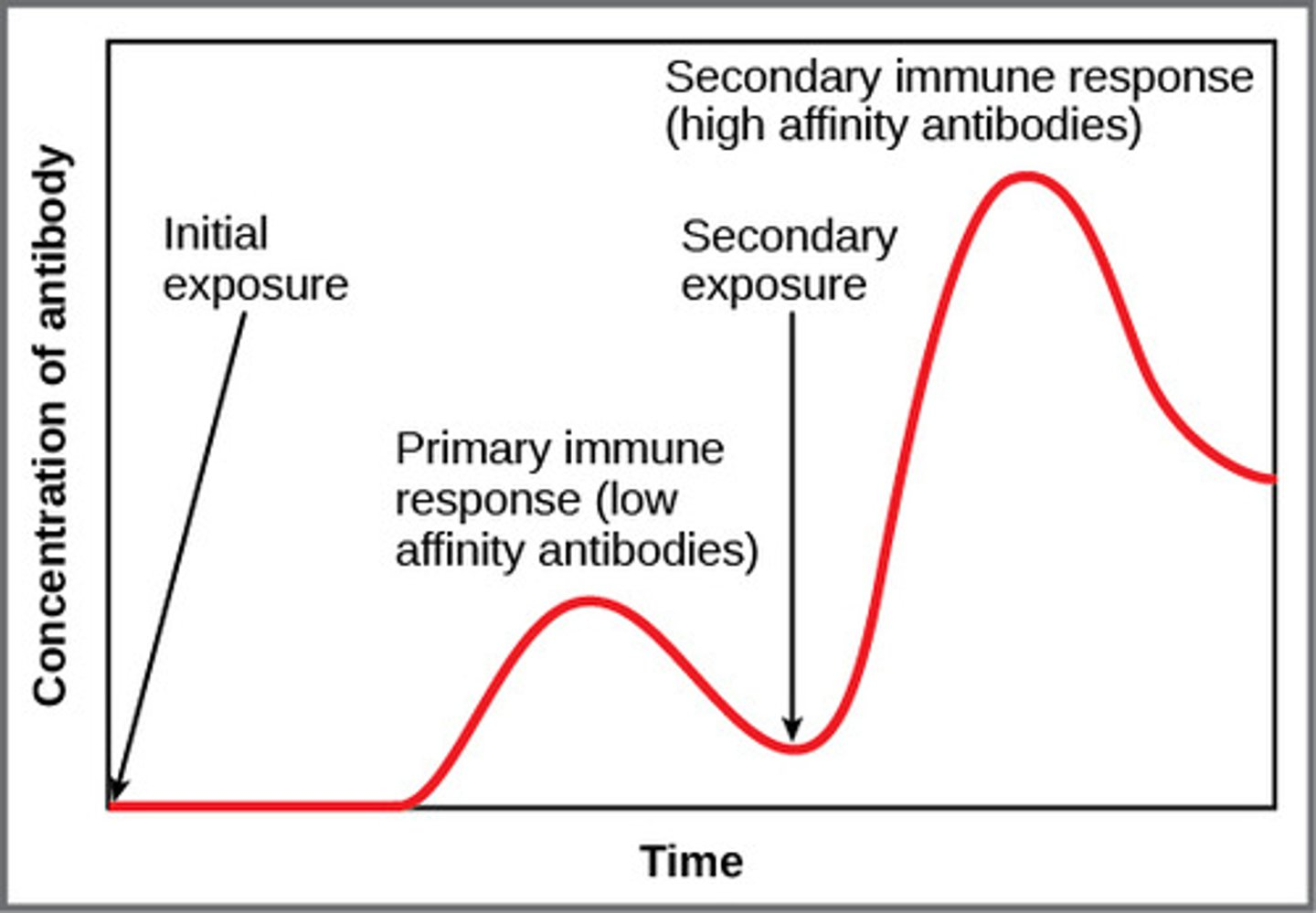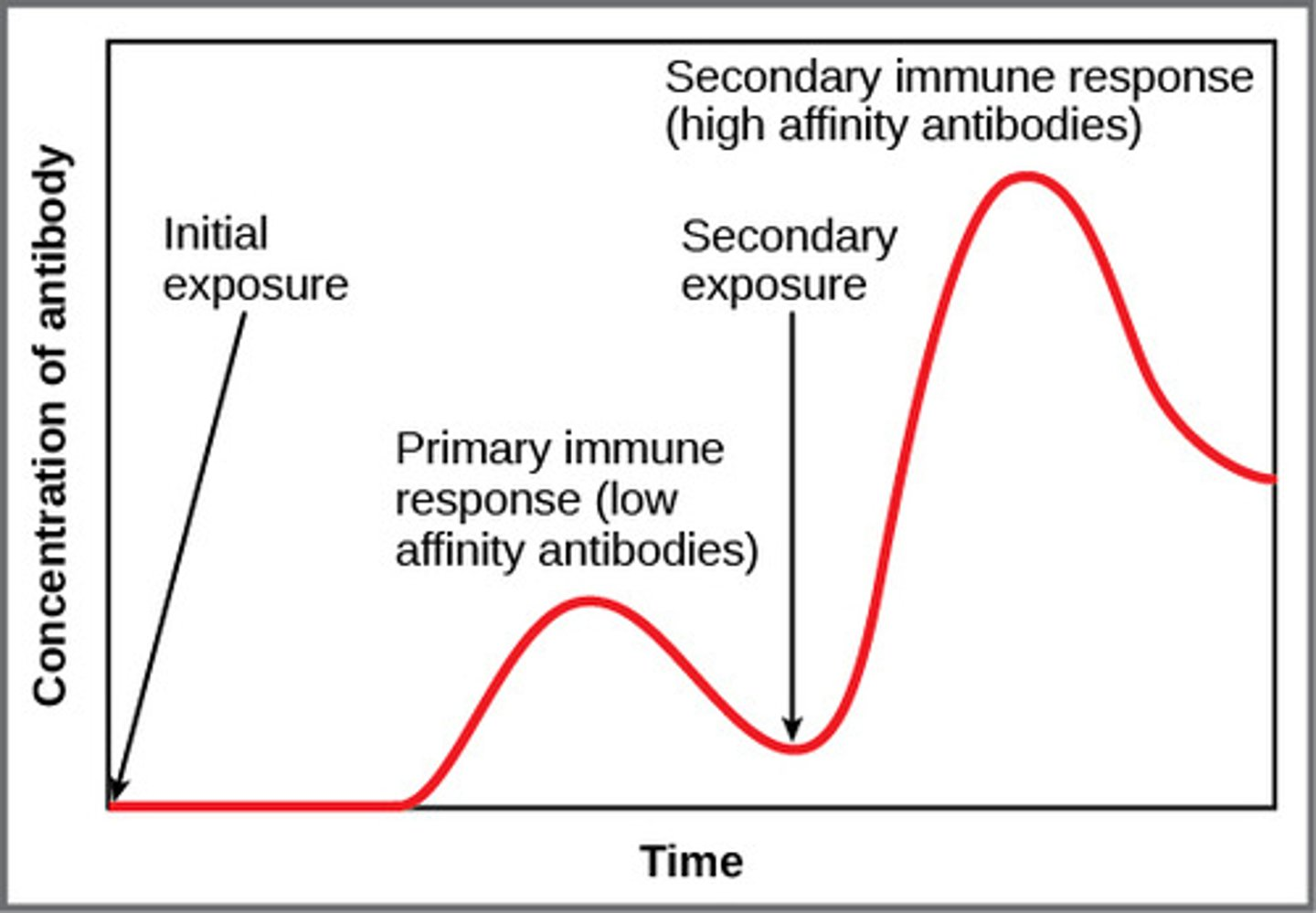Primary & Secondary Immune Response
1/9
There's no tags or description
Looks like no tags are added yet.
Name | Mastery | Learn | Test | Matching | Spaced |
|---|
No study sessions yet.
10 Terms

Primary & secondary immune response
Initial exposure
Primary immune response produces a small concentration of antibodies
Secondary exposure
Secondary immune response produces a high concentration of antibodies

Why is there a time delay between initial exposure and the primary immune response?
The clonal selection and expansion of specific T cells and B cells
The synthesis of antibodies
What do B cells do in the primary immune response?
Some B cells differentiate during clonal expansion to become plasma cells and memory cells
What is the secondary immune response?
The response to the secondary exposure to the pathogen or antigen or disease
What happens in the secondary immune response?
During the primary response, there are no memory cells.
After the immune response, there are now T and B memory cells that have been produced during cell mediated and humoral response
If the same foreign antigen re-enters, B memory cells recognise the antigen.
B memory cells divide quickly and differentiate into plasma cells to produce antibodies and more memory cells.
Is the secondary immune response quick?
Yes
Why is the secondary immune response quicker?
Because memory B-cells and Memory T-cells can recognise the antigen and produce the correct antibodies quicker.
Mention these key terms in an answer:
Clonal selection
Clonal expansion
Plasma cells & antibody concentration
How do T memory cells play a part in the secondary immune response?
T-lymphocytes differentiate into memory cells, producing:
Memory T helper cells
Memory T killer cells
What will T memory cells do?
Like B memory cells, they remain in the body for a long time and provide long term immunity